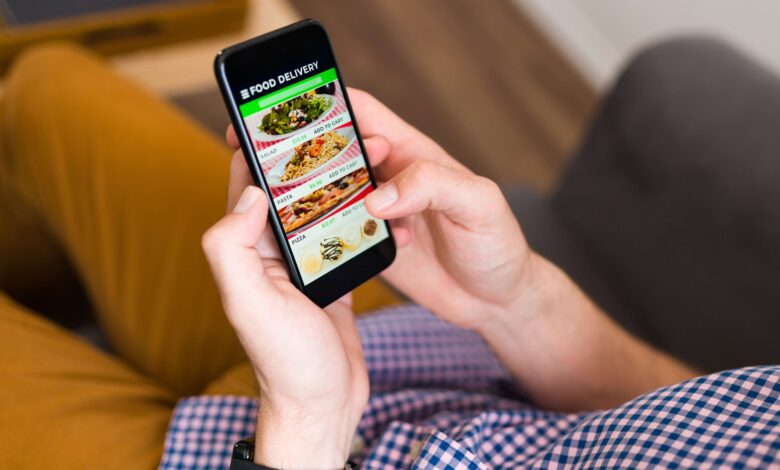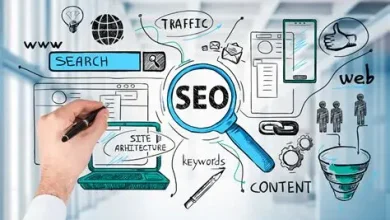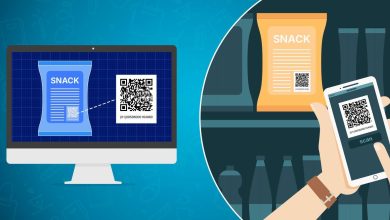
The food delivery app has changed the way people take orders and eat their meals. With the rising demands for speed and convenience, businesses are investing more in the development of food delivery apps to meet customers’ needs and remain in the game. A well-designed app simplifies the entire process—from browsing menus to placing orders to paying and tracking delivery times in real-time.
For companies, a food delivery application provides a direct way to connect with customers, increase their customer base, and increase revenue. It also aids in streamlining processes by coordinating payments, orders, and customer information efficiently. With features such as push notifications, loyalty programs, and customized recommendations, these apps improve customer satisfaction and engagement.
However, creating a reliable and user-friendly app for food delivery requires meticulous planning, the best technology, and a skilled food delivery app development company. Picking the right Food delivery application development firm ensures that your app complies with industry standards and offers an effortless experience for customers.
Different Types of Food Delivery Apps You Can Develop
The food delivery industry is growing rapidly, offering numerous opportunities for companies catering to various markets. When developing an app for food delivery, choosing the appropriate approach is vital to aligning your app with business objectives and customer requirements. Let’s look at the various kinds of apps for food delivery that you can create and how each has a specific objective.
Aggregator Food Delivery App
Aggregator apps function as a marketplace that connects various restaurants to customers. In this way, the app acts as an online platform for users to browse menus from different restaurants, make orders, and even pay. The delivery details are handled by restaurants themselves.
This method is affordable and simple to manage for companies because the app serves primarily as an intermediary, not involving complicated logistics. This is ideal for new businesses seeking to enter the food delivery industry with a minimal cost of operation.
Logistics-Supported Food Delivery App
This model is a step beyond the aggregator method by coordinating both order placing and delivery. The app collaborates with multiple restaurants and also has its own delivery vehicles. Apps such as Uber Eats and DoorDash follow the same model, providing end-to-end service from order until delivery to your doorstep.
This model for businesses calls for investment in a solid logistics system that includes routing optimization and driver management. But, it provides customers a seamless experience and offers opportunities to earn more revenue from the cost of delivery and service fees.
Restaurant-Specific Food Delivery App
A restaurant-specific application is created specifically for restaurants or food chains who want to provide direct delivery services, without using third-party platforms. McDonald’s as well as Domino’s are the only two companies with their own app that allow them to control the branding, customer information as well as service quality.
A dedicated app can increase the customer’s loyalty and increase profits by removing commissions from third parties. The app also lets you customize options like loyalty programs, customized promotions, and direct feedback channels.
Cloud Kitchen Food Delivery App
Cloud kitchens (also called virtual kitchens) are not physically-based dine-in spaces, with a focus on delivery. Cloud kitchens serve as the only source of communication between kitchens and the customers, easing the operations of delivery-only companies.
For entrepreneurs, this approach reduces the operational expenses associated with staffing and real estate and maximizes efficiency in delivery. The app’s features concentrate on fast process of orders, tracking in real time and integration of kitchen management.
Subscription-Based Food Delivery App
Subscription-based apps can provide food plans and scheduled deliveries for weekly, daily as well as monthly contracts. This kind of service is popular among people who are health conscious and also office workers looking for convenient, regular meal choices.
A subscription model can provide companies with predictable revenues as well as better planning of inventory. Features such as flexible meal planning as well as tracking nutrition and scheduled delivery are what make this type of app appealing to a small group of people.
Grocery and Meal Kit Delivery App
In addition to ready-to-eat meals, meal and grocery kit delivery services cater to customers who would rather cook at home and have the convenience of. Apps such as Instacart and HelloFresh offer fresh ingredients, kits that are pre-measured and recipes right to the doorsteps of customers.
This model for businesses needs efficient inventory management as well as the coordination of supply chains. It is appealing to consumers who want healthier and home-cooked food options, with the convenience of door-to-door delivery.
Core Features Every Food Delivery App Must Have
A food delivery app that is successful is more than just elegant design. It requires sturdy, user-friendly functions that guarantee smooth functioning and an enjoyable experience for the restaurant, customers, as well as delivery service providers. Let’s take a look at the key elements that each food delivery app should include.
User Registration and Profile Management
A simple and fast sign-up procedure is vital to getting users to sign up. The ability to sign up via telephone numbers, email addresses, and social media accounts eases the process of onboarding. Once logged in, users will be in a position to manage their accounts and store addresses and payment options and even order preferences.
Advanced Search and Smart Filters
A robust search feature helps users locate restaurants and cuisines of particular dishes in a short time. Intelligent filters such as delivery time reviews, scores, price ranges, and preferences for dietary items enhance the experience of searching, helping customers to locate exactly what they’re looking for.
Restaurant Listings and Menus
Restaurant profiles that are comprehensive and include quality images, menus that are detailed prices, as well as customer reviews can help customers make an informed decision. Every listing should include the delivery time, discounts available as well as special deals to provide additional convenience.
Seamless Order Placement
The process of ordering should be simple and quick. Customers should be able to put items into their carts or customize their order (like selecting spice levels or additional toppings) and then apply coupons without trouble. An order overview that is clear prior to payment reduces chances of errors and increases satisfaction.
Multiple Payment Options
The integration of different payment methods such as debit and credit accounts, wallets with digital transactions, net banking as well as cash-on-delivery enhances the convenience of users. Secure payment gateways using encryption guarantee security and increase trust with customers.
Real-Time Order Tracking
After an order has been placed Real-time tracking keeps customers updated on the status of their order throughout the process, from the moment of preparation until delivery and dispatch. GPS integration lets customers track the location of the delivery company as well as the estimated time for arrival.
Push Notifications
Updates on time via push notifications keep users interested and up-to-date. Notifications of dispatch confirmation, order confirmation times, delivery dates and discounts will provide a more seamless experience.
Ratings and Reviews
The ability to let users give their feedback and write reviews about restaurants and delivery services can help to maintain high standards. It also increases trust and allows other customers to make better decisions.
Customer Support
Fast and effective customer support via chat, email or phone helps to solve issues with orders or refund requests as well as complaints. Support systems that are well-integrated increase the customer’s happiness and retention.
Admin Dashboard
A powerful admin panel with many features allows efficient administration of users, restaurant orders, delivery partners. It also offers valuable insights via analytics to improve service and plan for growth for your business.
Key Factors to Consider When Choosing a Food Delivery App Development Company
Choosing the most suitable mobile app for food delivery business is a critical choice that will determine the performance of your business. With the numerous companies offering food delivery app development services, it is essential to assess their offerings based on specific criteria to ensure that you receive the best product that meets your specific needs. Let’s look at the most important factors to take into consideration.
Experience in Food Delivery App Development
The experience gained by the company in creating applications for food delivery plays a crucial part in establishing a profitable and effective platform. A skilled development team can understand the specifics of the industry of customer expectations, as well as the technical requirements of an application. Look through their portfolios to determine whether they’ve completed similar projects, and how they perform. A company that has expertise in the field can provide valuable information and suggestions to enhance the functionality of your app and enhance user experience.
Technical Expertise and Technology Stack
A food delivery application requires an established technical foundation in order for managing high-volume demand, real-time updates and seamless user experience. The development company must be proficient in the latest technologies such as React Native, Flutter, or native development for iOS and Android. They should also be skilled in integrating vital tools like GPS tracking as well as push notifications, payment gateways and cloud services. Find out about their technology stack and ensure that it is aligned with the app’s efficiency as well as the goals of scalability.
Customization and Scalability
Each business has its own unique requirements and the app you choose to use should reflect your branding and model of service. The developer should offer completely customizable solutions that are tailored to your needs. Beyond this the app must be scalable and capable of handling an increasing amount of orders, users and features without problems with performance. A developer who focuses on the long-term development of your business will create an app that grows with your company’s needs.
UI/UX Design Capabilities
The user experience is an important element in the effectiveness of any mobile app. A food delivery application should be user-friendly, attractive, visually appealing, and easy to use. The business should be staffed with skilled UX/UI designers that can design user-friendly interfaces that increase satisfaction and engagement. From menu browsing for simple navigation to streamlined checkout processes each interaction should be smooth and enjoyable for the users.
Post-Launch Support and Maintenance
The app’s development doesn’t stop after the moment of release. Constant updates, bug fixes or feature upgrades are required to ensure that your app is running seamlessly and in line with changing requirements of users. Ensure that the development company provides solid post-launch support and maintenance services. A dedicated team of support who responds quickly to issues and offers regular updates is crucial to long-term success.
The Key Takeaway
The development of an app that is successful in delivering food requires a blend of user-friendly designs, essential features, and the latest technology. Through offering seamless navigation, a variety of choices for payment, live tracking and extensive customer service and support, you can build an app that improves customer satisfaction and increases confidence. It is equally crucial to prioritize the management of delivery and restaurant partners and ensure smooth operations across all areas.
Selecting the food delivery app development company is vital to bring your ideas to fruition. A knowledgeable team can assist you in selecting the best technology stack, develop an intuitive interface and incorporate features that will meet the ever-changing requirements in the industry. If you have the right approach and an application that’s well-designed it is possible to make use of the ever-growing food delivery market and provide the kind of service that people appreciate and trust.
A high-end food delivery application is not just a way to boost your business, but also guarantees the long-term viability of your business and also customer loyalty.




